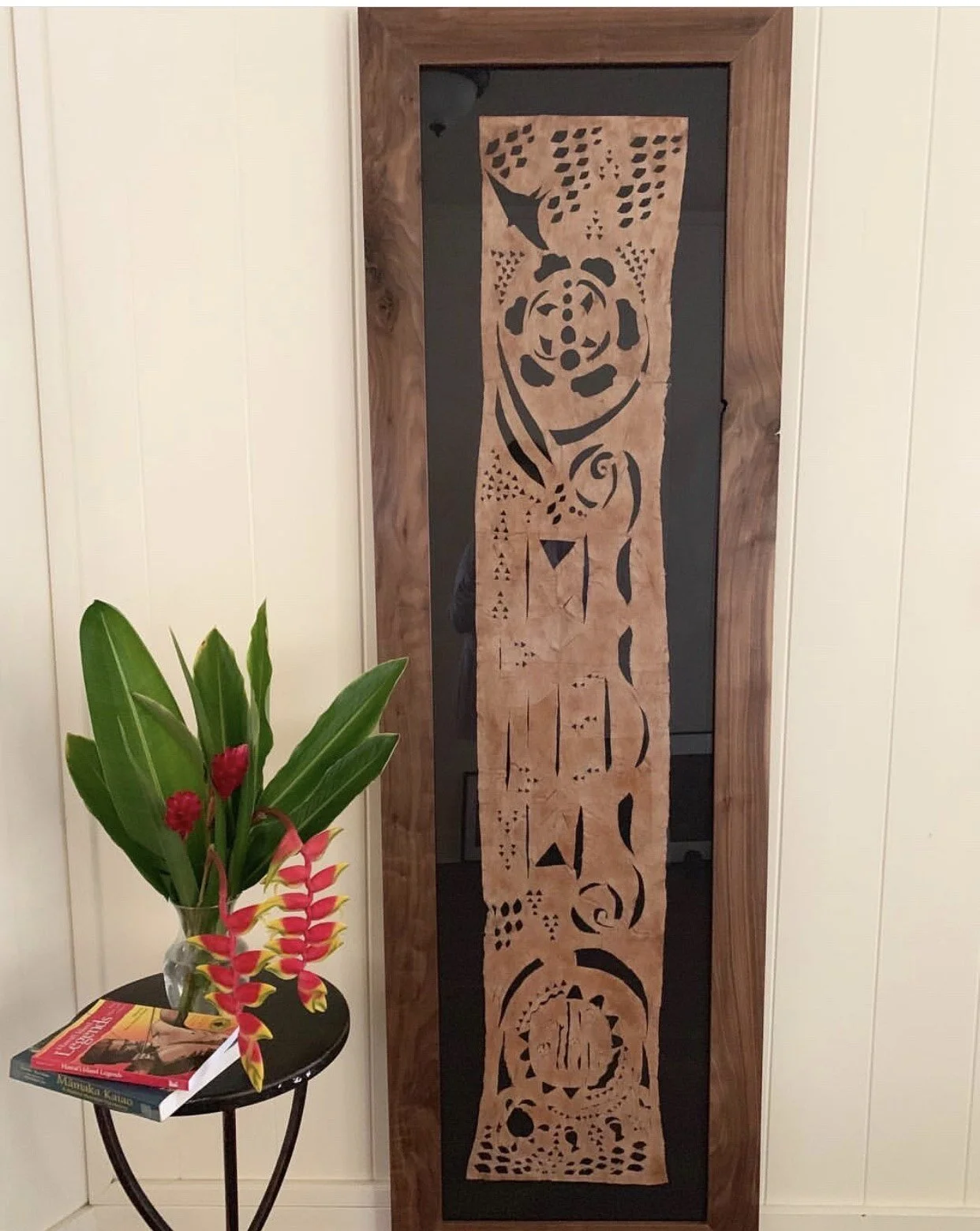Kekai Kahokukaalani, Kapa Curious Founder | Fearlessly Pushing the Boundaries of Traditional Kapa
Kapa, a beautiful and versatile fabric derived from the wauke plant or ulu tree, remains an integral part of Hawaiian society. Kekai shares her take on kapa art, on transforming its use, and pushing the boundaries of kapa as an art form.
Tell us about yourself and where you grew up.
In kānaka maoli tradition, my name, Kekai Kehokukaalani, tells the story of my birth. I was lucky enough to be born at home on Moloka’i, where the land division between the mountain and the sea meet.
Since I was raised at the height of the Hawaiian Cultural Renaissance, I grew up in a family that embraced traditional arts such as kapa art, woodcarving, lei making, and hula dancing. At that time, activism around Native Rights was on the rise and the exploration of creativity, arts, and culture was highly encouraged for me and my sisters.
I rediscovered my love for creating kapa art when my daughter moved away for college. I actually remember my parents coming over to visit, talking story, and bringing over kapa. Seeing it sparked this desire to connect with my roots. That’s when Kapa Curious was born.
Was it difficult taking the leap of faith and starting your creative business?
Starting the business wasn’t too hard for me. Looking back, I’m shocked at how registering my business or creating the website didn’t faze me at all. However, I consider myself to be quite shy, so going out there and selling the work was probably the biggest fear I had to overcome for a while. Thankfully, I have found a group of like-minded creatives in my field, and it’s comforting to know that you are not alone on this creative journey.
Can you tell us about your favorite work of art?
I constantly seek to push the boundaries of kapa as a material. One of my most recent works was a sculpture made with all natural dyes and 100% kapa. This particular piece is about facing changes and struggles in life all while finding the strength and fearlessness to step into the unknown. It took countless hours to shape the form and displace the face. The hardest part was evoking a sense of imbalance and change.
As an artist, you hope that your work can visually communicate the right emotions and meaning to your viewer. After posting the picture of the sculpture on social media, I was humbled to see many followers mention how they immediately understood its meaning before reading my captioned description of the piece. Despite the heavy topic, it is one of my most recent and favorite pieces.
What does the future hold for Kapa Curious?
In the near future, I will be teaching classes on modern kapa uses to young kids. It would be a dream to see more of your youth working with kapa, spreading the knowledge, or even becoming kapa/fiber artists.
What is your biggest tip for people interested in modernizing traditional Hawaiian art forms?
While I believe it is critical to keep traditional arts alive, we also need to remember the creative fearlessness of our Hawaiian ancestors. Out of all the Pacific Islands, they were some of the most adventurous users of kapa — they used the greatest variants of color and resourcefully derived dyes like pink from sea urchins.
When missionaries came over with their bright red cloth (a color the Hawaiian people had never seen before), kapa artists weren’t afraid to take pieces of their cloth and use its dye in their kapa.
Just like Hawaiian ancestors were fearless in their kapa creations, my biggest tip is to be equally as fearless. Reminding myself that our ancestors were brave brings me comfort in my work, especially as I push the boundaries of kapa as an art medium.
Go beyond any personal pain and let go of any insecurities you might be holding on to. Do not hinder your talent or put limitations on yourself. Letting your creativity shine will empower others to do the same.



